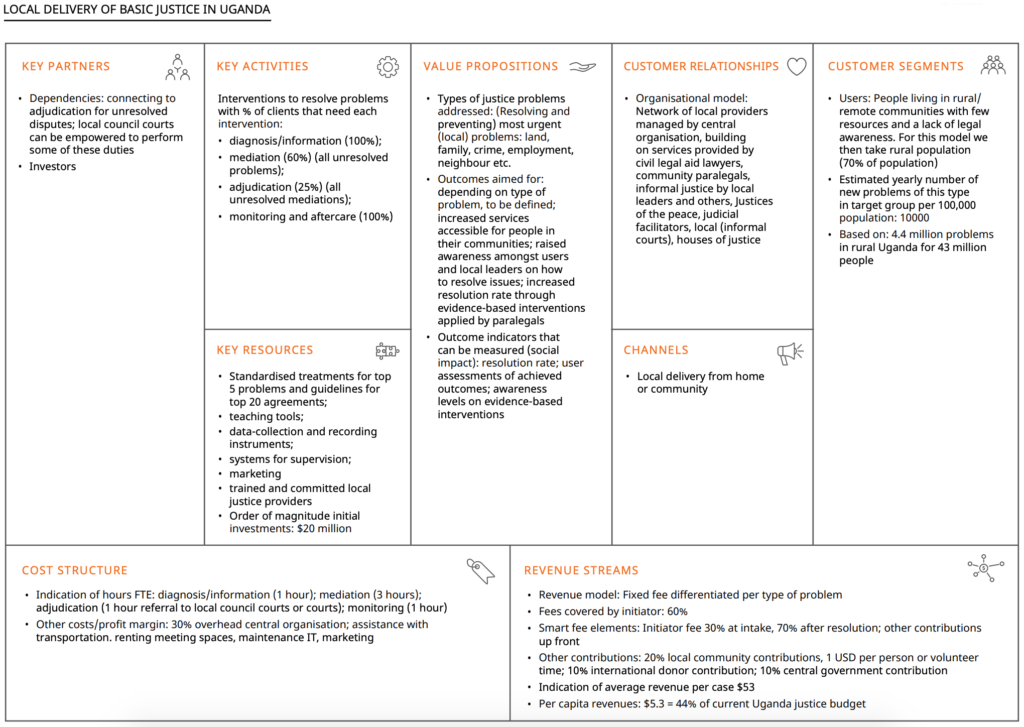In what setting?
Community justice services exist all over the world but they are generally more common in rural settings than in cities. They can relate to customary justice in a tribe, or they may have roots in a religion. Community justice services can be connected to local or central government, with the potential to scale across borders.
The origin of the community justice service may limit its potential to scale. In Ethiopia for example, different informal justice services cover different states, depending on which tribe has the majority. In Switzerland, each canton has a separate system of local dispute settlement services. In some countries in the Sahel region, the government’s geographic reach is limited, meaning services initiated by the government may not achieve national scale. If a local tribe has developed a specific way of settling disputes, this may not be acceptable to people from other tribes in the same region. In Colombia, houses of justice are seen as mechanisms for establishing government authority in remote areas.
Community justice services sometimes scale across borders. Facilitadores judiciales programs exist in a number of South American countries; paralegal models in many African countries.










